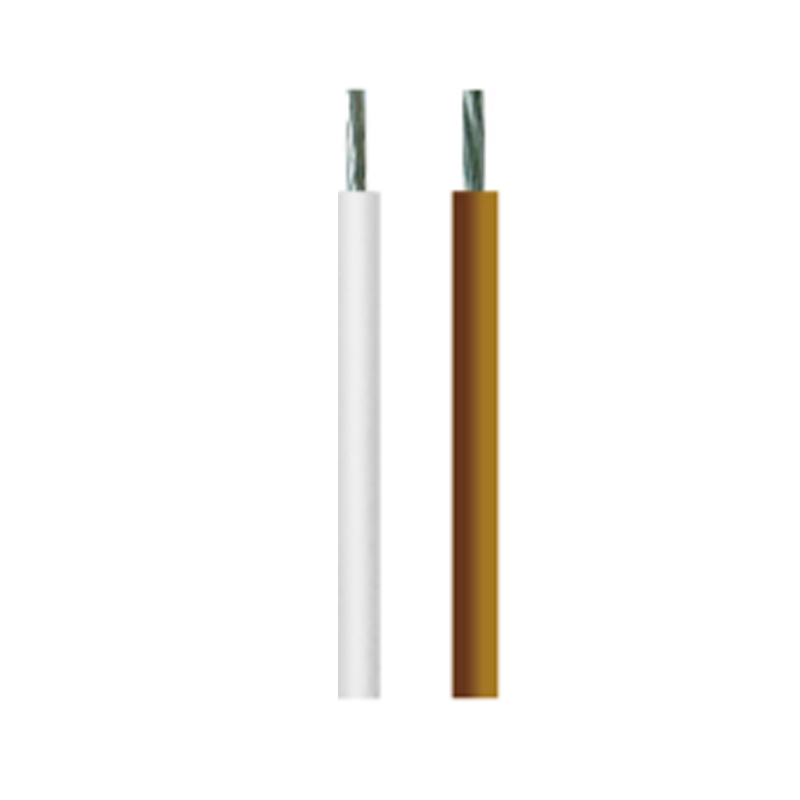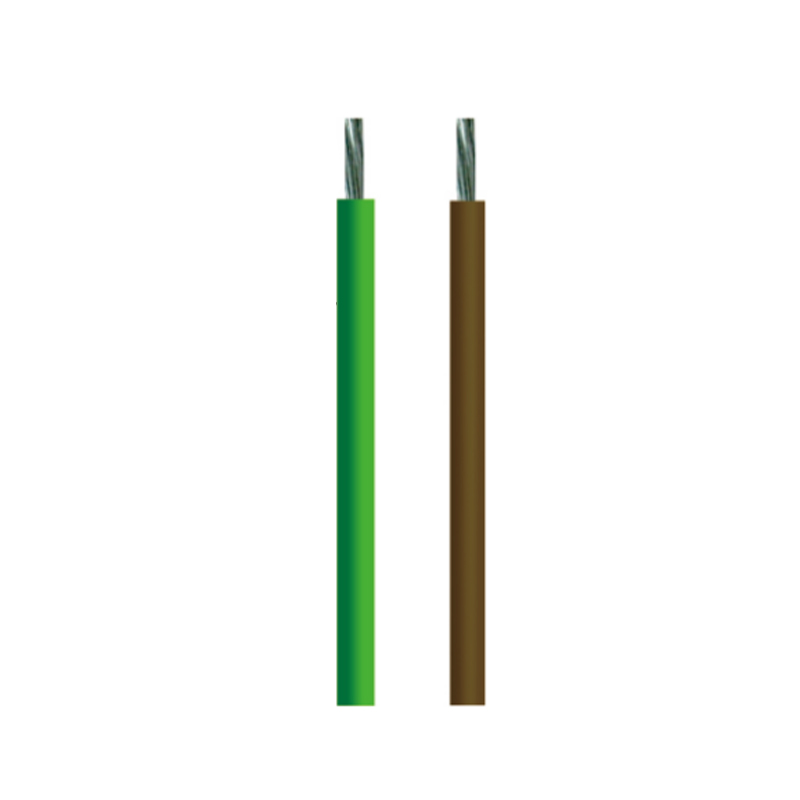Silicone rubber wires have become increasingly popular in modern electrical and industrial applications due to their high flexibility, excellent heat resistance, and durability in harsh environments. From industrial machinery to automotive systems and aerospace equipment, silicone rubber wires are often the preferred choice for wiring solutions where extreme temperatures, mechanical stress, or chemical exposure are present. However, selecting the right gauge and type of silicone rubber wire is critical to ensuring both performance and safety.
This article provides a comprehensive guide on how to properly select silicone rubber wires for specific applications, considering electrical, mechanical, environmental, and regulatory factors.
1. Understanding Silicone Rubber Wires
Silicone rubber wires consist of conductive cores, usually made of copper, which are insulated with silicone rubber. The insulation provides several advantages over traditional materials such as PVC or Teflon:
- High-temperature resistance: Silicone rubber can withstand continuous temperatures up to 200–250°C and intermittent peaks above 300°C.
- Flexibility: Maintains pliability at low temperatures (as low as -60°C).
- Chemical and UV resistance: Suitable for outdoor, automotive, or industrial environments.
- Durability: Resistant to abrasion, vibration, and mechanical stress.
Different types of silicone rubber wires exist to meet specific application needs, including single-core, multi-core, shielded, and high-voltage variants.
2. Determining the Correct Wire Gauge
The wire gauge refers to the cross-sectional area of the conductor, which directly affects the wire’s current-carrying capacity (ampacity) and voltage drop. Proper gauge selection is critical to ensure safety and efficiency.
a. Current Carrying Capacity
The first step is to determine the maximum current the wire will carry:
- Undersized wires can overheat, leading to insulation damage, fire hazards, and equipment failure.
- Oversized wires increase cost and reduce flexibility unnecessarily.
Reference: Wire gauge charts or manufacturer datasheets provide the recommended conductor size based on current load and insulation type. For silicone rubber wires, consider that high temperatures may reduce the current-carrying capacity, so derating factors must be applied.

b. Voltage Drop Considerations
For long wire runs, voltage drop can significantly affect equipment performance:
- Voltage drop formula: V = I × R, where I is current and R is resistance.
- Higher gauge numbers (thinner wires) have higher resistance, leading to greater voltage drops.
Select a gauge that minimizes voltage drop while ensuring efficient operation, particularly in critical power circuits or sensitive electronic applications.
c. Mechanical Flexibility
The wire gauge also affects flexibility, an important factor in applications requiring frequent bending or vibration:
- Thicker wires (lower gauge) are stiffer and harder to route.
- Thinner wires (higher gauge) are more flexible but may not carry high currents safely.
Balancing electrical and mechanical requirements is essential when selecting the gauge.
3. Choosing the Right Wire Type
Silicone rubber wires come in various constructions to suit different applications. Key considerations include:
a. Single-Core vs Multi-Core
-
Single-Core Wires:
- Simple construction with a single conductor.
- Suitable for straightforward wiring tasks or applications requiring high voltage insulation.
-
Multi-Core Wires:
- Multiple insulated conductors within a single jacket.
- Ideal for complex machinery, control panels, or signal wiring where multiple circuits run in parallel.
b. Shielded vs Unshielded
-
Shielded Wires:
- Include a metallic layer to protect against electromagnetic interference (EMI).
- Essential in sensitive electronics, communication systems, or environments with high electrical noise.
-
Unshielded Wires:
- More flexible and cost-effective.
- Suitable for general-purpose wiring where EMI is not a concern.
c. High-Voltage vs Low-Voltage Wires
- High-voltage silicone rubber wires feature thicker insulation and may include additional layers to prevent breakdown.
- Low-voltage wires prioritize flexibility and cost efficiency while maintaining basic insulation protection.
Selecting the correct wire type ensures performance, safety, and regulatory compliance in each specific application.
4. Environmental and Operational Factors
a. Temperature Extremes
Silicone rubber insulation allows operation in extreme temperatures, but wire construction should match the specific range of your application:
- For high-temperature applications such as ovens, engines, or industrial furnaces, choose wires rated for continuous exposure up to 200–250°C.
- For outdoor cold environments, ensure the insulation remains flexible at sub-zero temperatures to prevent cracking.
b. Chemical and Oil Resistance
Certain industries, including automotive and manufacturing, expose wires to oils, solvents, or chemicals. Choose silicone rubber wires with enhanced chemical resistance to avoid insulation degradation and maintain long-term performance.
c. UV and Weather Resistance
For outdoor applications, UV-stabilized silicone rubber wires prevent cracking or embrittlement due to sun exposure. Weather-resistant wires also resist moisture ingress, which is critical in marine or industrial outdoor settings.
5. Mechanical and Installation Considerations
Mechanical stress during installation and operation can affect wire longevity:
- Flexibility: Applications requiring repeated bending, such as robotics, machinery, or retractable systems, require highly flexible silicone rubber wires.
- Abrasion Resistance: Wires that may rub against surfaces should have reinforced jackets.
- Bend Radius: Observe minimum bend radius guidelines to prevent conductor damage.
- Strain Relief: Ensure proper strain relief at termination points to avoid conductor breakage or insulation tearing.
Selecting wires based on these mechanical factors extends the lifespan of the wiring system and reduces maintenance needs.
6. Regulatory and Safety Standards
Many applications require compliance with industry standards to ensure safety:
- UL (Underwriters Laboratories) Standards: Verify flame resistance, voltage rating, and insulation integrity.
- RoHS Compliance: Ensures materials are free from hazardous substances.
- IEC Standards: For international electrical and performance requirements.
Always verify that the selected silicone rubber wire meets applicable standards for your region and application.
7. Color Coding and Marking
Proper color coding helps with installation, troubleshooting, and safety:
- Standard color codes simplify identifying live, neutral, and ground wires.
- Multi-core silicone wires often include internal color-coded insulation to differentiate circuits.
- Markings such as voltage rating, gauge, and manufacturer information ensure compliance and traceability.
8. Practical Selection Steps
To select the right silicone rubber wire for a specific application:
- Determine electrical requirements: voltage, current, and power needs.
- Assess environmental conditions: temperature, chemicals, UV exposure, and moisture.
- Choose conductor size (gauge): balance current-carrying capacity and flexibility.
- Select wire type: single-core vs multi-core, shielded vs unshielded, high-voltage vs low-voltage.
- Check mechanical requirements: bend radius, flexibility, abrasion resistance, and strain relief.
- Ensure regulatory compliance: UL, IEC, RoHS, or industry-specific standards.
- Verify color coding and markings: for safety, ease of installation, and maintenance.
Following these steps ensures optimal performance, safety, and longevity in demanding applications.
9. Examples of Applications
Silicone rubber wires are widely used across multiple industries:
- Automotive: Engine compartments, sensor wiring, and high-temperature connectors.
- Industrial Machinery: Robotics, furnaces, and chemical plant wiring.
- Aerospace: Wiring for high-temperature aircraft components.
- Electronics: Flexible connections in control panels and circuit boards.
- Renewable Energy: Solar panel wiring exposed to high heat and UV radiation.
Each application may require different gauges, insulation thicknesses, and construction types, emphasizing the importance of proper selection.
10. Conclusion
Selecting the right gauge and type of silicone rubber wire is a critical process that affects electrical performance, safety, and reliability. By carefully considering factors such as:
- Electrical load and voltage requirements
- Temperature, chemical, and UV exposure
- Mechanical flexibility, bend radius, and strain relief
- Regulatory compliance and standards
…engineers and designers can ensure optimal performance in a wide range of industrial and commercial applications.
Proper selection not only extends the life of the wiring system but also minimizes maintenance costs, reduces safety risks, and ensures reliable operation under harsh environmental conditions. Silicone rubber wires, with their unique combination of flexibility, heat resistance, and durability, remain a superior choice for modern electrical systems when chosen correctly according to application requirements.



 English
English عربى
عربى Español
Español









